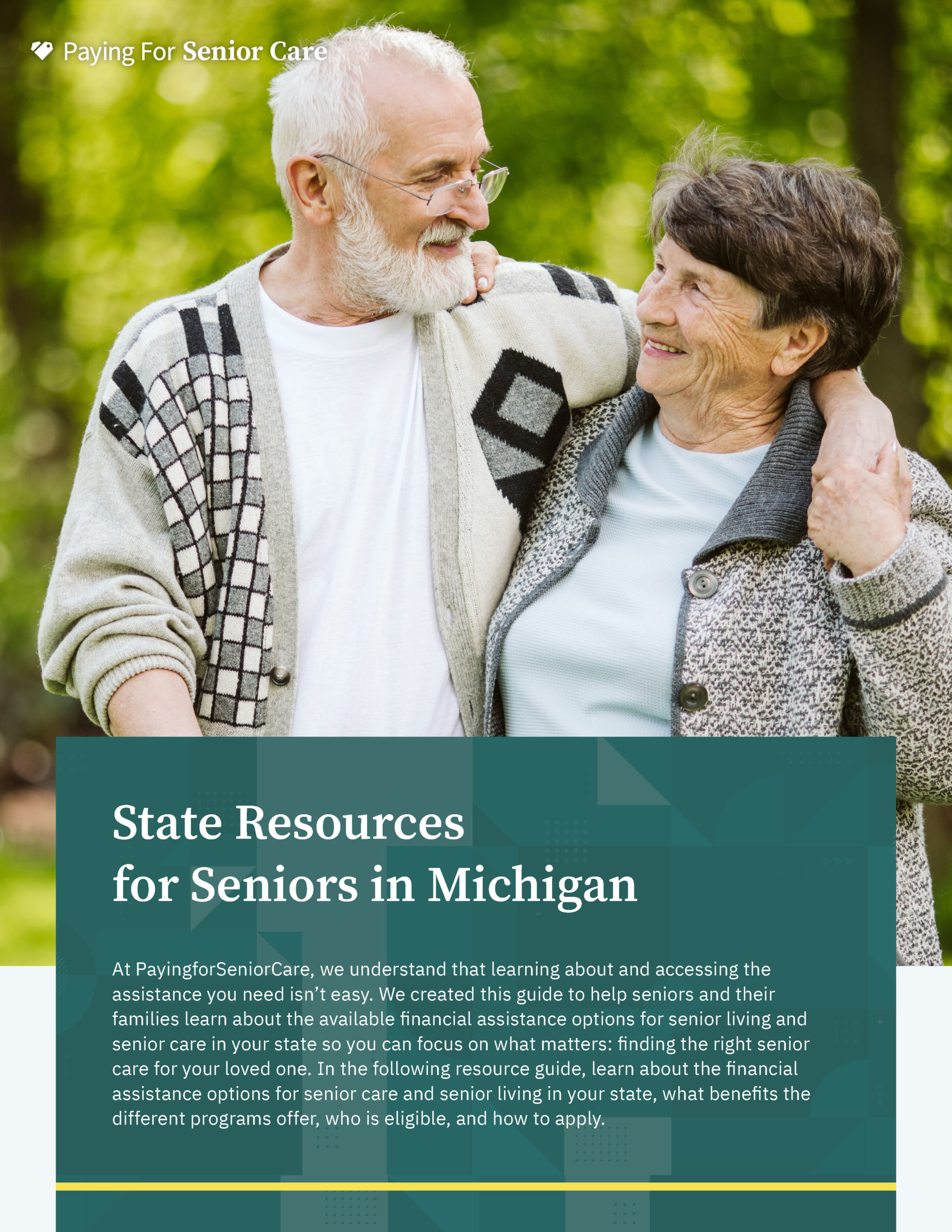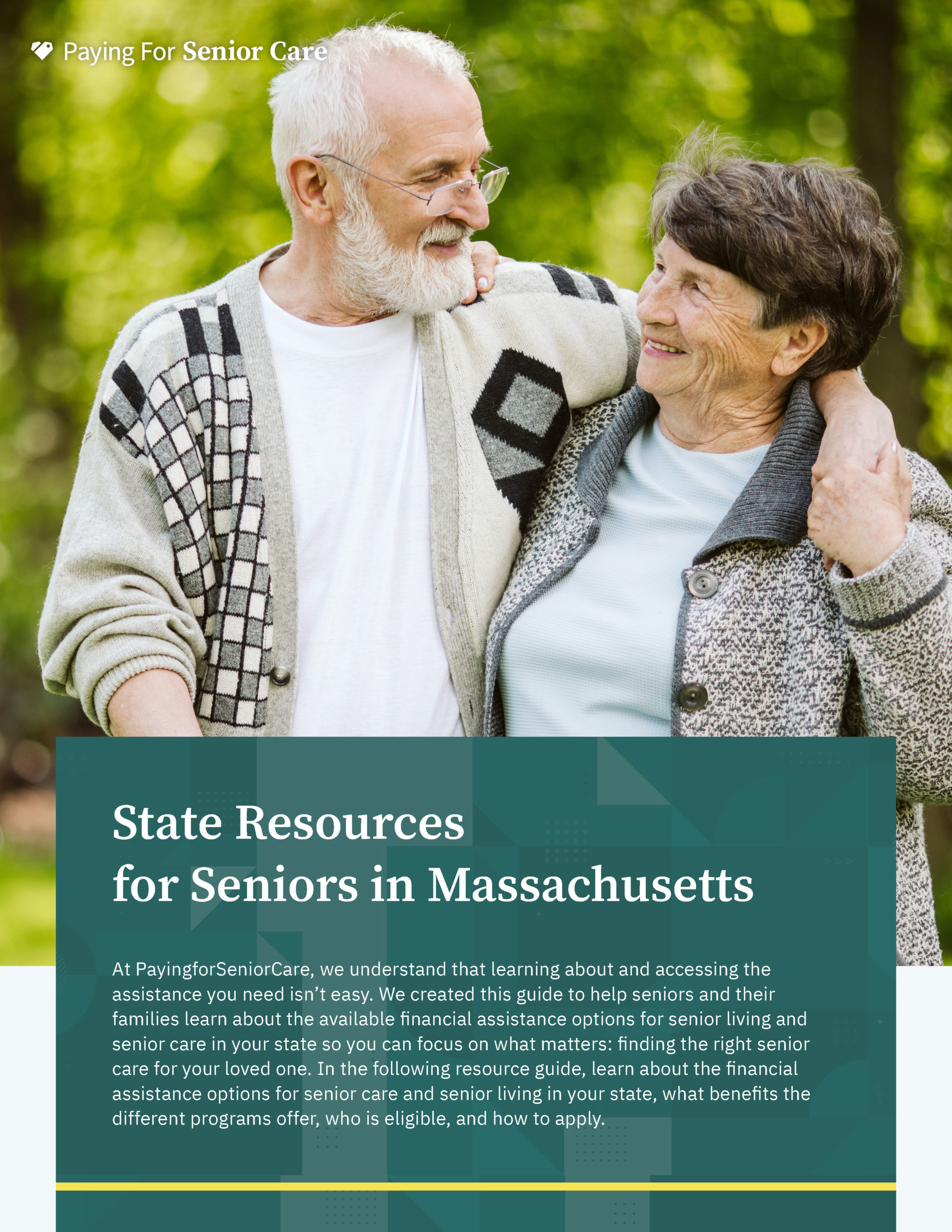As you get older, your body goes through many changes that can affect your appetite and your ability to chew food thoroughly and digest certain foods. For example, as you lose lean muscle mass, your metabolism is likely to slow down, reducing the number of calories you need to consume each day to maintain your weight.
Older adults also experience sensory changes that can interfere with eating or preparing food. One of those changes is reduced visual acuity, which causes some seniors to worry about their safety when using knives or cooking on a hot stove. Sensory changes can also affect the way food tastes and smells, making it less appealing to some seniors.
To account for metabolic changes associated with aging, reduce the risk of chronic health conditions and overcome other age-related nutrition issues, some seniors decide to follow a vegetarian or vegan eating plan. This type of diet has several potential benefits, but it’s important to understand how to get the right nutrients if you stop eating meat and other animal-based products.
This guide discusses the potential benefits of following a vegetarian or vegan diet and highlights some challenges of embracing this way of eating. You’ll also find tips for starting a vegetarian or vegan diet, accessing vegetarian and vegan options in a senior living community and connecting with local organizations to ensure you have enough nutritious food.
Potential Benefits of Following a Vegetarian or Vegan Diet
Following a vegetarian or vegan diet has several potential health benefits. Your health is based on many individual and environmental factors, so these potential benefits aren’t absolute. You may experience some of them, or you may not experience any at all. Researchers need to study vegetarianism and veganism more closely to determine if the benefits are widespread or if they’re limited to seniors with certain health characteristics.
Here’s a quick overview of the potential benefits, along with detailed explanations below:
|
Potential Benefit
|
Overview
|
|
Improved heart health
|
– Following a plant-based diet may reduce the risk of heart attack, heart disease and stroke.
– Plant-based diets are associated with lower blood pressure.
– Increased fiber intake helps reduce cholesterol levels.
|
|
Reduced risk of cancer
|
– Plant-based foods contain phytochemicals that support the immune system, which may reduce the risk of cancer.
|
|
Increased micronutrient intake
|
– Consuming a variety of plant-based foods may increase the amount
of vitamins and minerals you consume.
|
|
Better immune function
|
– Plant-based foods contain beneficial nutrients that support your immune system.
|
|
Lower risk of cognitive decline
|
– Eating leafy greens and berries may reduce the risk of cognitive decline.
|
Improved Heart Health
Eliminating or limiting the consumption of animal products can influence your heart health in several ways. First, fruits, veggies and whole grains are high in fiber, which binds to bile acids in the digestive tract and removes them from the body. To replace these bile acids, the liver takes cholesterol out of the bloodstream, lowering the amount of cholesterol circulating throughout the body. Second, fruits and vegetables are high in antioxidants, substances that can help reduce the risk of heart disease. Finally, many of the foods included in a vegetarian or vegan diet are lower in calories than meats and other animal products, which can help you lose weight or maintain a healthy weight.
If you minimize your consumption of processed foods, following a vegetarian or vegan diet may also lower your blood pressure. In a 2020 study, researchers discovered that following a vegetarian diet “significantly lowered” systolic blood pressure, which measures how much force your blood exerts against the walls of your arteries when your heart beats. All these changes may result in improved heart health, reducing the risk of heart disease, heart attack and stroke.
Reduced Risk of Cancer
The consumption of animal products has been linked to an increased risk of cancer, making many people wonder if following a vegetarian or vegan diet could lower their cancer risk. According to MD Anderson Cancer Center, cutting meat and replacing it with plant-based foods can reduce your risk of developing cancer in your lifetime. This is because plant-based foods contain phytochemicals that can help your body fight off cancer cells before they spread. Plant-based foods are also rich in fiber, and fiber intake is associated with a reduced risk of cancer.
Increased Micronutrient Intake
As long as your vegetarian or vegan diet includes a variety of foods, you may benefit from increased micronutrient intake. Micronutrients — vitamins and minerals your body uses to carry out its many important functions — are found in fruits, vegetables and whole grains. If you’re a vegetarian and not a vegan, you may also benefit from consuming milk, cheese and other low-fat dairy products. Harvard Medical School reports that vegetarians tend to eat more fiber, potassium, folic acid, magnesium and phytochemicals than meat eaters do.
Better Immune Function
Plant-based diets support immune health by increasing the amount of phytochemicals, antioxidants, vitamins and minerals you consume. These substances keep the cells healthy, making it easier for your immune system to fight infections.
Lower Risk of Cognitive Decline
Researchers from the Boston University School of Medicine report that limiting your consumption of animal products and increasing your consumption of leafy greens and berries may help reduce the risk of cognitive decline as you age. Cognitive decline causes memory loss, confusion, impulsivity and many other symptoms associated with dementia.
Challenges of a Vegetarian or Vegan Diet for Seniors
Although following a vegetarian or vegan diet has some potential health benefits, it can also be challenging to stick to this type of eating plan, especially if you have any chronic health conditions that affect your ability to eat certain foods. These are some of the potential challenges you may encounter:
Difficulty Chewing
If you wear dentures, you may have difficulty chewing certain foods, such as nuts, seeds and raw fruits and vegetables. Seeds and small pieces of food can also get stuck under your dentures, irritating your gums or the roof of your mouth. If you switch to a plant-based diet, you may find it difficult to chew many of the recommended foods, making it harder to get all the nutrients you need.
How to Manage Difficulty Chewing
To make it easier to consume a variety of foods, try cutting your food into smaller pieces or changing the way you prepare certain foods. For example, instead of trying to bite into a whole apple, you may have less trouble if you cut the apple into thin slices.
Risk of Nutrient Deficiency
It’s possible to eat a plant-based diet that has all the vitamins, minerals and macronutrients you need to satisfy your nutritional needs, but it requires careful planning. If you don’t eat a variety of foods, you may miss out on some of the nutrients you need to maintain your health. Many people who follow a plant-based diet develop deficiencies in calcium, vitamin D3, vitamin B12, iron, iodine and zinc.
How to Manage Nutrient Deficiency Risks
You can reduce the risk of nutrient deficiencies by reading nutrition labels and carefully planning your meals and snacks. If possible, try to mix and match your favorite foods to get as many nutrients as possible during each meal. For example, if you know that beans are high in zinc and brown rice is high in manganese, consider making seasoned rice and beans for dinner. When it’s ready, serve it with broccoli for an extra dose of vitamin C or carrots for some vitamin A. Instead of eating chips or crackers for a snack, try spreading sunflower seed butter on thin apple slices to increase your intake of magnesium, phosphorus, fiber, copper, manganese, selenium and vitamin E.
Additional Food Prep Requirements
Vegetarian and vegan diets emphasize the consumption of whole foods, such as raw vegetables, whole fruits and whole grains. If you plan to eat these items regularly, you’ll need to spend a little more time preparing food. For example, you may need to chop up raw vegetables to eat for a snack, slice apples to serve with lunch or cut up fresh ingredients for soups and casseroles. If you have arthritis, vision problems that make it difficult to see what you’re doing in the kitchen or any other medical issues that make food preparation more difficult, you may have trouble following a plant-based diet consistently.
How to Manage Food Prep Requirements
Fortunately, some kitchen tools can help you overcome strength, mobility and vision challenges. A peeler with a cushioned handle can make it easier to peel potatoes and other vegetables if you have joint pain and stiffness. Adding lights to your kitchen can make it easier to see as you’re chopping vegetables, mixing ingredients or transferring food from one bowl to another. You can even buy a jar opener, electric knife, rocking vegetable chopper or food processor to reduce the amount of food prep work you have to do with your hands. If you struggle to lift heavy pots and pans, consider cooking some of your hot meals in a slow cooker.
Social Challenges
Having dinner with friends and sharing a holiday meal with family members are important ways to stay connected to the people you love. Following a vegetarian or vegan diet can present some social challenges, however, as not everyone is as committed to the plant-based lifestyle. Your friends may also like to go to steakhouses or other restaurants where it’s difficult to find something that you can eat.
How to Manage Social Challenges
If you want to continue following a plant-based diet, you may have to come up with some workarounds, such as eating dinner at home and then joining your friends for coffee and dessert later. You can also overcome diet-related social challenges by cooking for your friends or inviting your loved ones to play board games or do jigsaw puzzles or other activities that don’t involve eating a full meal.
Tips for Starting a Vegetarian or Vegan Diet
If you’ve never followed a plant-based diet before, follow these tips to get started:
- Talk with your doctor. This is especially important if you have diabetes, kidney disease or another medical condition that affects your diet. Your doctor may advise you to avoid certain foods or recommend supplements to make up for nutrients that are more difficult to get when you don’t eat meat.
- Consider meeting with a registered dietitian. Registered dietitians have extensive education in helping people of all ages create eating plans that meet their nutritional needs. They also understand how to change your eating plan to accommodate a new medical condition. A dietitian can help you understand what foods you should eat to get all the nutrients you need to support good health.
- Start slowly. It’s great that you want to eat well and preserve your health, but drastic changes can be overwhelming. If you’re new to preparing vegetarian or vegan foods, you may also need some time to get up to speed on certain cooking methods. Start with a few small changes and then work your way up to bigger ones. One easy way to get started is to plan “meatless Mondays.” On Mondays, make a vegetarian or vegan dinner to slowly reduce the amount of animal products you’re consuming.
- Stick with familiar foods at first. If you have to learn several new recipes or experiment with new cooking techniques when you first start following a plant-based diet, you may find it difficult to continue. To ease into a vegetarian or vegan diet, start with foods you already eat. For example, if you already know how to make a meatless casserole, a pasta dish with vegetables and black bean soup, plan to make those meals for the first three days. Supplement with familiar breakfast and lunch foods to make it easier to get used to living a plant-based lifestyle.
- Do your research. If you decide to go vegan, there are some foods that appear to be completely plant-based that actually contain ingredients derived from animals. For example, gummy candies and marshmallows contain gelatin, which is made from animal collagen. Some pasta entrees are also made with chicken broth or other animal-based ingredients. Research foods carefully to make sure they don’t contain any products made from animals.
Special Considerations for Seniors with Chronic Health Conditions
If you have a chronic medical condition, you may need to adjust your diet to manage your symptoms or prevent the condition from getting worse. Talk to your doctor if you have any of the conditions below.
Cancer
Seniors with cancer can benefit from following a plant-based diet to help maintain their weight, keep their bodies strong and reduce some of the side effects that occur during treatment. Unfortunately, some treatments lead to nausea, vomiting, loss of appetite and other symptoms that can make it difficult to eat more than a few bites at a time. Some cancers also cause bloating, frequent indigestion and a sense of fullness after eating a small amount of food, creating additional challenges for seniors concerned with their nutrient intake. Cancer treatments may also cause malnutrition due to a reduced ability to absorb food in your digestive tract.
Your care team should include a registered dietitian to help you overcome these challenges. When you meet with your dietitian, let them know if you lost weight, developed any physical problems that affect your ability to chew or swallow food, reduced your food intake or had any trouble preparing meals. If you lose your appetite, your dietitian may recommend eating high-protein, high-calorie foods at the beginning of each meal. Even if you only eat a few bites, choosing these foods can help you get as many calories as possible in a short amount of time.
You may also want to consume more liquids than solids when your appetite is at its lowest. Vegetable-based soups, smoothies made with fresh fruit and other liquids can help you increase your nutrient intake without worrying about preparing or eating a whole meal. It’s also a good idea to keep healthy snacks on hand so you can eat as soon as you feel hungry. If you have nausea, stick with toast and other foods that are easy to eat and digest. Avoid foods with strong smells, as they may make your nausea worse.
Clotting Disorders
Vitamin K makes the proteins your body needs for blood clotting. If you take warfarin to reduce your risk of blood clots, talk with your doctor about whether you need to limit the amount of vitamin K in your diet. Leafy greens and soybean and canola oil are three of the best sources of this vitamin, and you can find both in many vegetarian and vegan diets.
Diabetes
The good news for diabetics is that many foods emphasized on a vegetarian or vegan diet are also recommended for people with diabetes. This includes fruits, vegetables, beans, lentils, whole grains and low-fat or non-fat dairy products. When you start your new eating plan, you may need to check your glucose level more often to determine how the diet affects your blood sugar. Eating plant-based foods makes your body more responsive to insulin, which means you may need to reduce the amount of diabetes medication you take. Consult with your doctor before discontinuing any medication or reducing your medication dosage.
Homebound Seniors
If you’re homebound due to a medical condition, you may find it difficult to prepare meals, shop for groceries and perform other diet-related activities. Family members, friends and paid caregivers can help by doing the shopping, chopping ingredients and preparing simple meals. If you can only get help for a few hours per week, you may want to ask your caregiver to shop for ingredients that are already chopped and ready to use in your favorite recipes. For example, some grocery stores sell butternut squash that has already been peeled and chopped into cubes, making it easier to prepare a squash casserole on a day when you don’t have help available.
If you don’t have relatives nearby, consider signing up for a meal delivery service to ensure you receive at least one hot meal each day. Some providers offer meals made specifically for vegetarian or vegan seniors. If you have the funds, you may also want to try a plant-based meal delivery service. These services deliver pre-portioned ingredients and recipes to your home consistently, making it easier to prepare meals and get the right amount of nutrients.
Kidney Disease
Your kidneys have one of the most important jobs in your body: filtering wastes out of the bloodstream and helping maintain normal levels of vitamins, minerals and other substances. In people with kidney disease, the kidneys don’t work as well as they should, causing waste products to build up in the blood. Kidney disease may also make it difficult for the body to maintain normal levels of potassium and phosphorus.
If you have kidney disease, talk with your nephrologist (kidney specialist) about whether you need to make any dietary adjustments. Nutrition recommendations vary based on how much kidney function you have, whether you have any other chronic health conditions and other individual factors. That said, kidney disease may present the following challenges for seniors who want to follow a vegetarian or vegan diet:
- Phosporus Intake: Many plant-based foods are high in phosphorus, a mineral that’s essential for healthy bones and teeth. Damaged kidneys don’t filter phosphorus as well as they should, which may cause phosphorus to build up in the bloodstream. Some seniors on vegetarian and vegan diets may need to avoid or limit their consumption of high-phosphorus foods, including lentils, beans, nuts and oatmeal.
- Potassium Intake: Your doctor may recommend limiting foods high in potassium to prevent too much potassium from building up in your bloodstream. Many high-potassium foods are typically found in a vegetarian or vegan diet, including potatoes, legumes, bananas, leafy greens and tomatoes. Depending on your kidney function and doctor’s recommendations, you may need to limit your intake of these foods or avoid certain high-potassium foods entirely.
Vegetarian and Vegan Dining Options in Senior Living
Many national senior living communities offer vegetarian and vegan options, making it easier to follow a plant-based diet even after you move to assisted living, memory care or another residential community. Menus vary by community, so contact your dining services director or another staff member to find out what options are available. If you haven’t moved to a senior living community yet, ask about vegetarian and vegan options when you’re touring prospective residences.
|
Community Name
|
Vegetarian and Vegan Dining Options
|
|
Atria Senior Living
|
Atria Senior Living has locations in Georgia, California, Massachusetts, Texas, Colorado, New York, Pennsylvania, Arizona and North Carolina. Some locations allow residents to request vegetarian meals. Atria Senior Living also offers cooking classes, which can help you learn how to prepare some vegetarian or vegan dishes on your own.
|
|
Beehive Homes
|
Beehive Homes has locations in 21 states, including Montana, New Mexico, New Jersey, Florida, Michigan and Nevada. Chefs emphasize the use of fresh ingredients in their dishes. Seniors also have the option of requesting special meals or sharing their favorite vegetarian or vegan recipes with staff members.
|
|
Brookdale Senior Living
|
Brookdale Senior Living has communities in 41 states, including Delaware, Alabama, Maryland, New Hampshire, Tennessee, Rhode Island and South Carolina. It prepares some meals according to the principles of Optimum Life Cuisine, which emphasizes low grains, fruits, vegetables and low-fat dairy products. Cooks also focus on using heart-healthy cooking techniques.
|
|
Cogir Senior Living
|
Cogir Senior Living operates communities in Washington State and California. Each community has a nutrition consultant who ensures all meals meet specific nutritional guidelines. Meals focus on fresh, local ingredients, making it easier for vegetarian and vegan residents to continue following a plant-based lifestyle.
|
|
Erickson Senior Living
|
Erickson Senior Living has communities in Texas, Colorado, Pennsylvania, Virginia, Massachusetts, New Jersey, Maryland, Florida, Kansas, Michigan and North Carolina. Each community has multiple dining options featuring chef-prepared meals made to your liking. Residents can request meals prepared without meat or other animal products, making it easier to follow a plant-based lifestyle. Erickson Senior Living also posts nutritional information on its website to help residents make healthy decisions.
|
|
Five Star Senior Living
|
Five Star Senior Living operates communities in 27 states, including Kentucky, Maryland, Illinois and Missouri. Each community follows the farm-to-table philosophy, which emphasizes fresh ingredients purchased from local producers. You can also request customized meals according to your dietary restrictions.
|
|
Sunrise Senior Living
|
Sunrise Senior Living has nearly 300 locations throughout the United States, serving Arizona, California, New York, Kentucky, Illinois and many other states. Each community offers a personalized dining program that it can tailor to your vegetarian or vegan diet. Sunrise Senior Living communities focus on delivering a premier dining experience, which means staff members look for ways to make every meal flavorful, personal, customized, nutritious and sensible.
|
|
Vi Living
|
Vi Living operates continuing care retirement communities (CCRCs) in Arizona, Colorado, California, Illinois and South Carolina. Vi communities typically provide casual and fine-dining options, giving residents more control over what they eat. A community’s menu may include salads, pasta dishes and other items that contain no meat.
|
|
Watermark Retirement Communities
|
Watermark Retirement Communities has locations in 21 states, including Connecticut, New Mexico, Ohio, Oklahoma, Utah and Texas. Chefs at each location focus on using fresh ingredients sourced from local vendors, giving residents access to nutritious, flavorful meals. You may even be able to request specific dishes, making it even easier to follow a plant-based diet.
|


















































